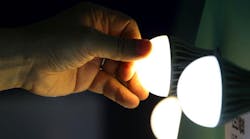The California Energy Commission (CEC) unanimously approved the Title 20 Appliance Efficiency Regulations on Jan. 28, in a move that the National Electrical Manufacturers Association (NEMA) says will raise the cost and lower the efficiency of LED lighting sold in The Golden State.
NEMA said the CEC approved the new regulations “despite sound and substantive policy recommendations by industry, lighting experts, and consumer groups working to ensure sustained market adoption and energy efficiency gains.”
NEMA has opposed details of the new regulations in comment periods over the past three years and many of those concerns were addressed by the commission in amendments prior to the final vote, but many sticking points remained. The association’s Kyle Pitsor, VP government relations, posted a detailed account of the lighting industry’s concerns about Title 20 the week before the regulations were approved. Among the points raised by NEMA in those comments, it said a required CRI 90 specification “is going to compel consumers to buy more expensive and less efficient CRI 90 LED lamps. Compared to consumers in the rest of the country, Californians will have to spend more and get less in terms of energy efficiency.” The comments also highlighted detailed specifications in Title 20 regarding use of red phosphor that fail to account for that technique’s reduction in efficacy, and the prospect of the CEC’s ruling being superseded by federal law as the Department of Energy (DOE) has already begun work toward energy conservation rulemaking regarding LED general purpose lighting, a process expected to be completed before Jan. 1, 2017.
In a statement following the CEC’s vote, NEMA president and CEO Kevin Cosgriff said, “Electrical manufacturers want to increase the sales, efficiency gains and overall use of LED products in California — we are not at odds with that CEC objective. The regulations approved today were based on poorly analyzed data of the emerging LED lamp market.
“Today’s market price of general service LED lamps is nearing parity with the product they are primarily intended to offset, the halogen incandescent lamp. And their price is continuing to fall. By contrast, CEC staff analysis acknowledges the Title 20 proposal enacted today will increase the price of LED lamps and that the proposed designs are less energy-efficient than today’s more popular LED options.”
“Sadly today’s vote will negatively affect the growth of LED technology in California, the efficiency gains that accompany it, and the prices local citizens have to bear.”










